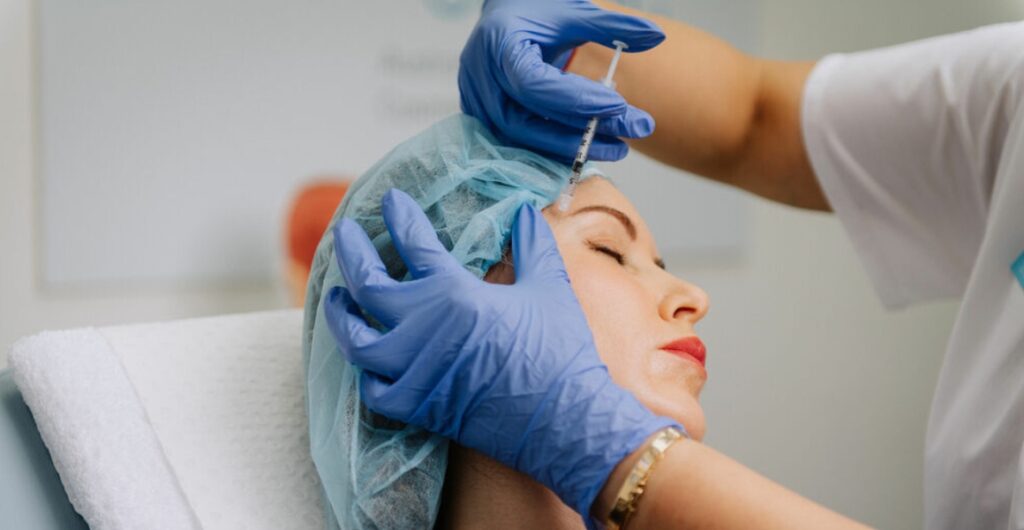Cosmetic Injectables Explained

Cosmetic Injectables: Explained
Cosmetic injectables are used by practitioners to smooth, remodel or to augment various facial areas, involving treatments such as wrinkle relaxers and dermal fillers, or a combination of both, to aesthetically enhance natural features and restore youth.
Dermal Fillers
A popular and safe alternative to cosmetic surgery, dermal fillers are injected under the skin to restore fullness and structure to areas that have lost or lack volume. Common treatment areas are the lips, cheeks, chin and temples.
Wrinkle Relaxers
Wrinkle relaxers are a quick and easy treatment that significantly reduces dynamic wrinkles such as the forehead and crow’s feet. However, wrinkle relaxers can also be used to change the shape of the jawline and reduce excessive sweating under the arms and the palms of the hands.
Generally, wrinkle relaxers are used to soften dynamic lines and stop the movement of muscles in the facial area. Although popular with mature patients to treat moderate to deep wrinkles, they have become increasingly popular within a younger audience as a preventative measure, reducing the risk of deep wrinkles in the future.
How do they Work?
Dermal fillers are based on hyaluronic acid, a naturally occurring substance in your body that is responsible for keeping up the moisture levels in your skin. Dermal fillers work by increasing the skin’s supply of this acid which revitalises the skin, instantly adds volume, diminishes the appearance of wrinkles and gives the skin a softer look.
Wrinkle relaxers are made from purified botulinum toxin type A. When this toxin is injected into the muscles in low doses, it temporarily blocks the local nerve signals that trigger muscle contractions. The blocking of the nerve signals results in softened wrinkles as well as the prevention of new wrinkles forming on the skin.
How Long do they Last?
There are several factors that determine how long cosmetic injectables will last including the individual person, their metabolism, the type of product administered and area treated.
Wrinkle relaxers last for approximately 3-4 months and have minimal downtime (eg. a small bruise from the needle), however they can take up to 7 days to see full results.
Dermal fillers can last anywhere between 6-18 months. Downtime may involve mild to moderate bruising and swelling lasting up to 1 week though this depends on individual factors.
Who can Administer them / what Qualifications do they Need?
Wrinkle relaxers and most dermal fillers are scheduled 4 medication, meaning a doctor’s prescription is required. They are administered by a Registered Medical Practitioner (Doctor) or a supervised (by the doctor) Registered Nurse who has completed appropriate training in cosmetic injectables.
Do AACDS Offer Cosmetic Injectable Courses and Qualifications?
Yes. At AACDS, we offer the 52852WA Graduate Diploma of Cosmetic Nursing and Injectables which will qualify you to become a cosmetic nurse and cosmetic injector.
The Graduate Diploma of Cosmetic Nursing and Injectables is a nationally accredited postgraduate cosmetic injectables course developed for nurses who wish to enter the field of cosmetic medicine.
The course runs for 10 months on a full-time study load but is also available on a part-time study load. To qualify for enrolment of this course, you must be a registered nurse (RN) or an Enrolled Nurse/Division 2 Nurse. You must also have a current registration with AHPRA.
Click here for more information about our 52852WA Graduate Diploma of Cosmetic Nursing and Injectables.

